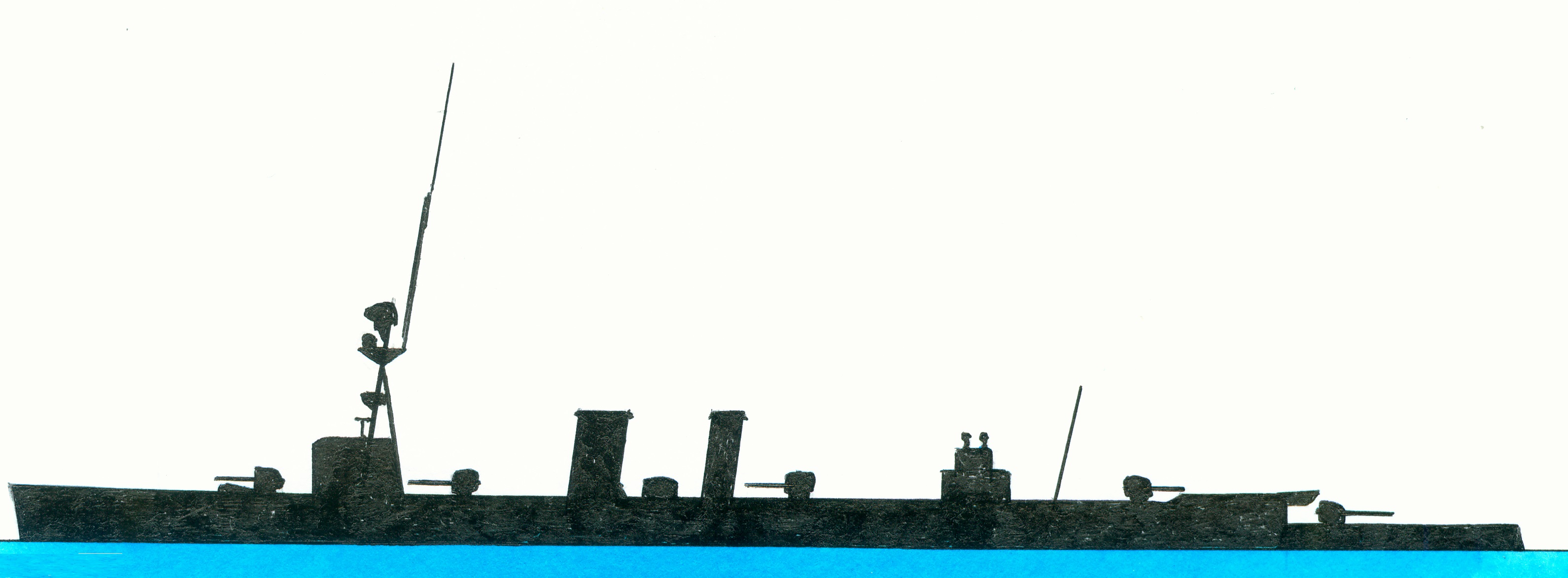Caledon-class
Of the C-class light cruisers class Caledon-subclass consisting of the Caledon, Calypso, Cassandra and Caradoc, preceded by the Arethusa-class and succeeded by the Danae-class. Differs from the preceding sub-classes with slightly changed propulsion and superstructure. Building ordered in December 1917. Laid down by Vickers Limited, Barrow, England in March 1916, launched on 25 November 1916, commissioned in June 1917 and sunk while hitting a mine in the Gulf of Finland on 5 December 1918.
Displacement 4.306 (normal)-4.990 (deep load) tons and as dimensions 129,5 (between perpendiculars)-137,2 (over all) x 12,9 x 5,72 (mean at deep load) metres or 425-450 x 42.3 x 18.9 feet. The machinery consisted of 2 Brown-Curtis geared steam turbines and 6 Yarrow boilers which supplied via 2 shafts 40.000 shp allowing a speed of 29 knots. Fuel oil bunker capacity 270 (normal)-848 (maximum) tons. Her crew numbered 344 men. The armour consisted of a belt 3,2cm/1.25”-5,7cm/2.25” (bow)-7,6cm/3” (amidships)-5,½”-6,4cm/2.5” (stern) and a 2,5cm/1” thick deck (upper, amidships) and over the rudder. The armament consisted of 5-15cm/6” breech loading Mark XII guns, 2-7,6cm/3” 20cwet anti aircraft guns, 4-3pd quick firing guns, 1 machinegun and 8-53cm/21” torpedo tubes.

